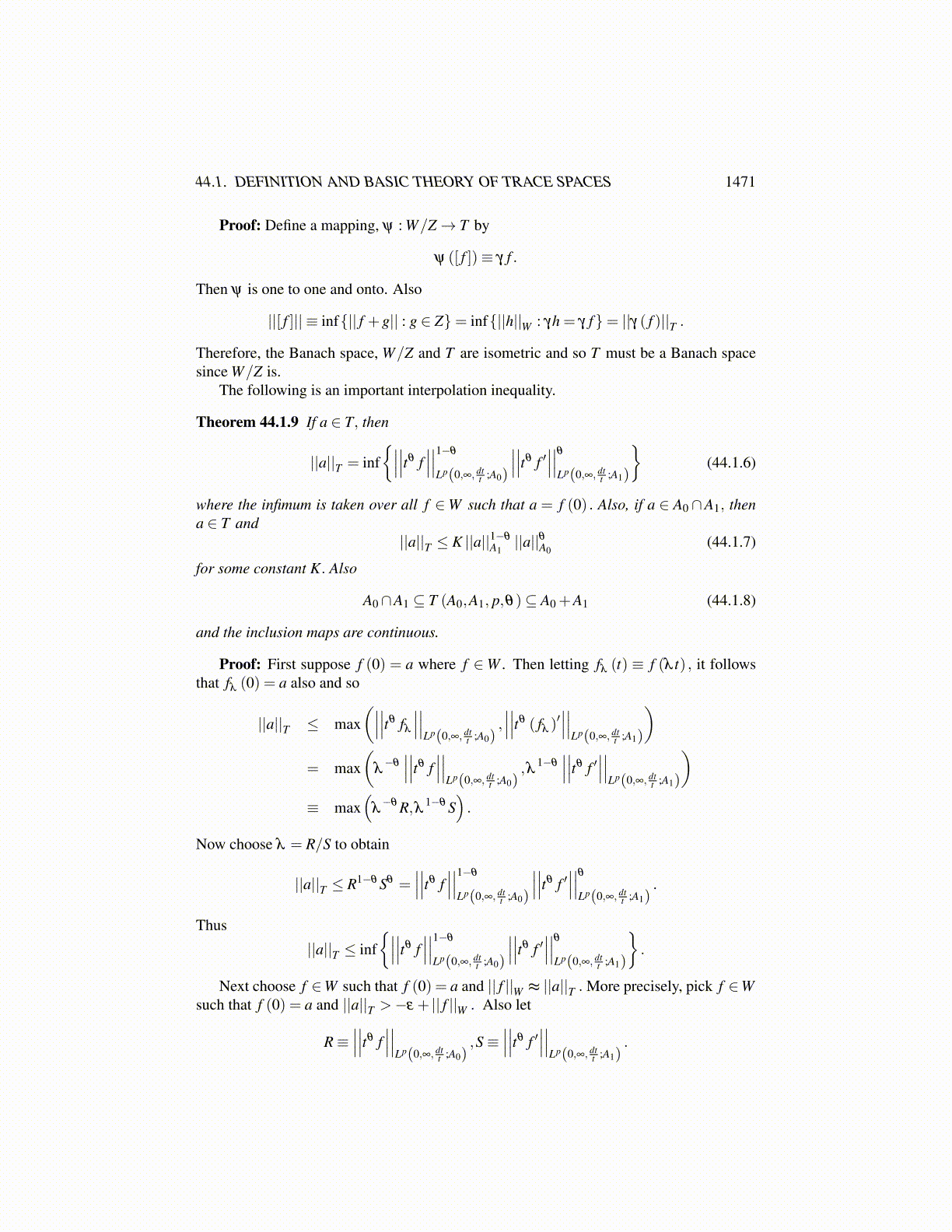
44.1. DEFINITION AND BASIC THEORY OF TRACE SPACES 1471
Let g̃(τ) ≡ g(eτ) . Thus τ → eτθ g̃(τ) is Lp (R;A) and g̃ ∈ L1loc (R) . Now let ψδ be a
mollifier and consider
eθτ g̃δ (τ) ≡∫
∞
−∞
eθσ g̃(σ)ψδ (τ−σ)dσ
=∫
∞
−∞
eθ(τ−σ)g̃(τ−σ)ψδ (σ)dσ
so that
g̃δ (τ) =∫
∞
−∞
e−θσ g̃(τ−σ)ψδ (σ)dσ
=∫
∞
−∞
e−θ(τ−σ)g̃(σ)ψδ (τ−σ)dσ
Thus g̃δ ∈C∞ (R;A) and using Minkowski’s inequality,(∫∞
−∞
∣∣∣∣∣∣eθτ g̃δ (τ)− eθτ g̃(τ)∣∣∣∣∣∣p dτ
)1/p
= (44.1.4)
(∫∞
−∞
∣∣∣∣∣∣∣∣∫ ∞
−∞
(eθ(τ−σ)g̃(τ−σ)− eθτ g̃(τ)
)ψδ (σ)dσ
∣∣∣∣∣∣∣∣p dτ
)1/p
≤∫
δ
−δ
ψδ (σ)
(∫∞
−∞
∣∣∣∣∣∣eθ(τ−σ)g̃(τ−σ)− eθτ g̃(τ)∣∣∣∣∣∣p dτ
)1/p
dσ
≤ ε
∫∞
−∞
ψδ (σ)ds = ε
provided δ is small enough due to continuity of translation in Lp. Thus changing variablesin 44.1.4, letting τ = ln(t) and gδ (t) ≡ g̃δ (ln(t)) , it follows gδ ∈ C∞ (0,∞;A) and thisintegral equals (∫
∞
0tθ p ||gδ (t)−g(t)||p dt
t
)1/p
This result applied to f and f ′ with A = A0 and then A = A1 shows the last claim. Thisproves the lemma.
Definition 44.1.5 Let W be a Banach space and let Z be a closed subspace. Then the quo-tient space, denoted by W/Z consists of the set of equivalence classes [x] where the equiva-lence relation is defined by x ∽ y means x− y ∈ Z. Then W/Z is a vector space if the oper-ations are defined by α [x]≡ [αx] and [x]+ [y]≡ [x+ y] and these vector space operationsare well defined. The norm on the quotient space is defined as ||[x]|| ≡ inf{||x+ z|| : z ∈ Z} .
The verification of the algebraic claims made in the above definition is left to the reader.It is routine. What is not as routine is the following lemma. However, it is similar to sometopics in the presentation of the K method of interpolation.
Lemma 44.1.6 Let W be a Banach space and let Z be a closed subspace of W. Then W/Zwith the norm described above is a Banach space.